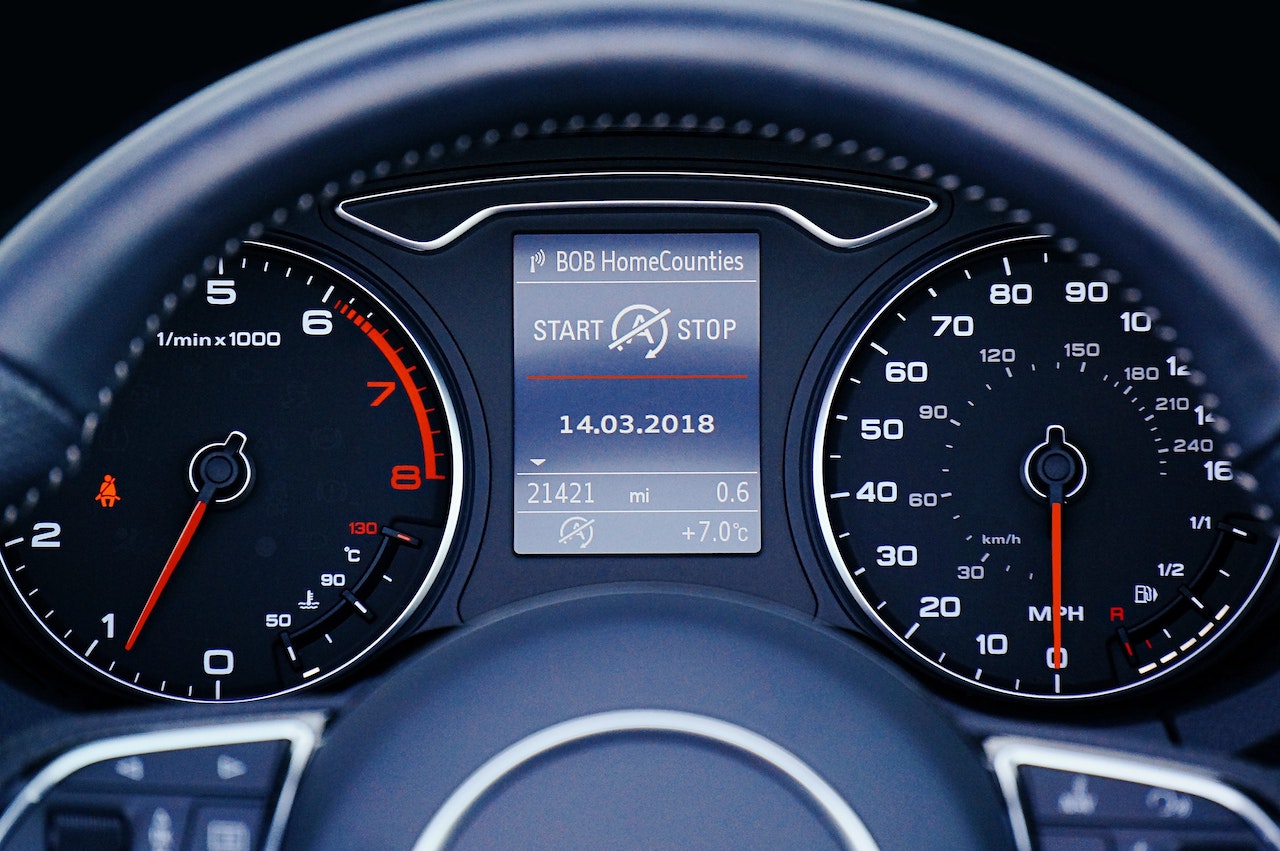Why the Oil Light Illuminates During Braking – and Effective Remedies

Many car owners can relate to that moment of dread when a warning light suddenly lights up on the dashboard. Picture a beautiful day, wind in your hair as you cruise down the highway, only to have it interrupted by the orange glow of the oil light right when you tap the brake to slow down for a stop sign.
But why does this happen? Pinpointing the exact cause without a thorough inspection can be tricky, but it’s likely one of these three scenarios:
- A Faulty Oil Pressure Sensor
- A Malfunctioning Oil Pump
- An Engine Leak
While the seriousness of these issues may vary and might not immediately endanger your vehicle, an illuminated oil light is a clear sign not to be ignored. Keeping your car off the road is advisable until you identify the cause. Most auto parts stores offer quick diagnostic tests to help gauge the severity of the issue.
What Causes the Oil Light to Illuminate When Braking
Regarding the oil light coming on while braking, it’s essential to understand a few key points. The oil pressure light, often shaped like an oil can or indicated by a warning to “check the oil level,” is a crucial indicator on your dashboard.
First and foremost, it’s wise to check if your vehicle is due for an oil change. Over time, oil can degrade, losing its ability to maintain proper pressure. Thus, the oil warning light may illuminate as a reminder that an oil change is needed.
Manufacturers typically recommend oil changes every 3,000 miles, and for good reason. As oil ages, the constant cycles of heating and cooling within the engine cause it to deteriorate, diminishing its lubricating capabilities and protective functions for engine components.
Assuming you adhere to the manufacturer’s guidelines and your oil change is not overdue, three primary scenarios could be causing the oil light to come on when you apply the brakes. Each of these will be examined in more detail below.
A Faulty Oil Pressure Sensor
The most common and, fortunately, the least concerning reason for the oil light to illuminate when braking is a malfunctioning oil pressure sensor.
This sensor plays a crucial role in monitoring the oil pressure within the vehicle and transmitting this data to the combination meter or instrument panel. If the calculation falls outside the acceptable range, it triggers the oil pressure warning light.
This function is of utmost importance due to the following reasons:
- Low Oil Pressure: This could signify inadequate oil circulation within the engine. This lack of lubrication may lead to the engine grinding and potentially seizing.
- Excessive Oil Pressure: Conversely, this could indicate an overfilled oil bay, exerting excessive force and potentially causing a gasket to burst, resulting in a significant leak.
The oil pressure in a vehicle varies depending on the engine’s RPMs. When accelerating and revving the engine, the oil pressure rises. Conversely, during braking and a subsequent decrease in RPMs, the oil pressure naturally decreases.
Over time, an oil pressure sensor is subject to wear and tear. This may delay information transmission to the combination meter or control panel. Consequently, a drop in oil pressure while braking might be misinterpreted as abnormal when it’s perfectly normal for oil pressure to decrease as RPMs lower.
If you suspect that the oil pressure sensor might be faulty and you’re unable to test it immediately at an auto parts store, here are some steps you can take:
- Pull your car to a stop in a level resting spot and turn the engine off.
- Allow the machine several minutes to rest, allowing the oil to settle.
- After the wait, open the hood and locate the oil dipstick. It’s typically found near the front of the engine and often has a yellow ring at the top for easy handling.
- Remove the oil dipstick.
- Use a paper towel or a light cloth to clean off all the oil from the dipstick. Examine the oil on the fabric; it should be a light brown, not overly dark or excessively creamy.
- Re-insert the dipstick into the oil bay and then remove it once again.
- Check near the bottom of the oil dipstick to see if the oil has settled within the acceptable range. The dipstick usually has the standard field marked.
If your car’s oil levels are within the acceptable range after this initial check, the issue is likely related to the oil pressure sensor.
If you suspect that it might be the oil pump causing the issue, you can perform some additional tests to be certain. Here are the steps you should follow:
- Pop the hood of your vehicle.
- Turn the engine on.
- Listen carefully to the engine’s sounds. If the oil levels in your vehicle are normal but you hear grinding, ticking, or any other unusual noises coming from the engine, it’s likely an indication of a faulty oil pump. In this case, your oil pressure sensor is doing its job by alerting you that there’s insufficient oil being pumped to the engine.
After conducting this secondary test, if the oil levels are normal and the engine sounds smooth, the issue is probably related to the oil pressure sensor. You can safely drive your car to an auto parts store and have them connect it to a computer to confirm if the oil pressure sensor is faulty.
If the oil pressure sensor is determined to be faulty, don’t worry; it’s not a very complex repair. You can purchase a new oil pressure sensor for under $20 at most auto parts stores. Here’s how you can replace it, applicable to most cars:
- Locate the oil pressure sensor or switch. This part is usually on most vehicles’ engine blocks or cylinder heads. It has a plastic valve attached to a threaded metal end. If you’re having trouble finding it on your car, consult your owner’s manual to determine its location.
- Unplug the electrical connector of the oil pressure sensor. This will be a small wire connecting to the plastic female valve side of the oil pressure sensor. Hold the retaining tab and gently pull it to disconnect this wire. It might take a few attempts, and you may need the help of some tools if there’s dirt or rust.
- Remove the old oil pressure sensor. You’ll need a wrench to loosen the oil pressure sensor. Ensure you have the appropriate tools on hand. If there’s a lot of rust buildup, having some lubricant or WD-40 can be helpful. After a few turns, you can unscrew the sensor by hand.
- Compare the new sensor to the old one. Before purchasing, confirm with the auto parts store that you’re getting a part compatible with your vehicle’s make and model. Ensure that the sides that screw into the engine block have the same diameter and that the threads match.
- Apply thread sealant to the new part. Since this part regularly comes into contact with pressurized oil, applying thread sealant is crucial to prevent leaks. Find a liquid or paste that’s compatible with petroleum-based products.
- Mount the replacement oil pressure sensor. Use your hand to screw the replacement part into the engine block or cylinder head. Once you can’t turn it further by hand, use your wrench to fasten it securely.
- Reattach the electrical connector. Ensure the wire is fully inserted into the replacement part and the retaining tab is engaged. Once it’s in place, gently pull the connector to verify everything is snug and tightly fitted.
- Test the replacement part. Turn on the engine and let the vehicle run for a few seconds. Check that there’s oil pressure on the gauge and that the oil light has turned off. If there’s pressure and the warning light is off, open the hood and ensure no oil leaks from the area you just worked on.
If the oil light persists after running the engine for 10 seconds, turning it off immediately is crucial. This signals that the replacement part hasn’t been installed correctly, or there might be a more severe issue with the oiling system. Continuing to run the vehicle under these circumstances can lead to rapid and irreparable engine damage, potentially amounting to thousands of miles worth of wear in seconds.
Suppose you find yourself in this situation or are uncomfortable performing these repairs alone. In that case, it’s best to have your car towed to a professional shop for a thorough examination.
If the oil pressure sensor isn’t the culprit behind the illuminated oil light, you may be dealing with a faulty oil pump.
The oil pump plays a critical role by circulating pressurized oil to the engine’s moving parts, like the bearings, pistons, and camshaft. This process lubricates these components and contributes to the machine’s overall cooling.
Signs Your Pump Is Bad
- Decreased Oil Pressure: The oil pump regulates oil pressure in the engine. If you observe low oil pressure, it’s a serious issue that endangers the engine’s health. Vehicles experiencing low oil pressure might exhibit reduced power, increased engine heat, and a higher likelihood of stalling out. This could be why your oil light is illuminating when you apply the brakes.
- Higher Engine Operational Temperature: Oil prevents friction among engine components. As friction generates heat, a vehicle with a worn oil pump becomes more susceptible to overheating. If you notice the temperature gauge on your car rising along with the oil warning light, it’s imperative to pull over, shut off the engine immediately, and seek professional assistance.
- Unusually Noisy Hydraulic Lifters: A reduction in oil pressure and flow can result in the inadequate lubrication of hydraulic lifters within the engine. This can lead to significant noise and wear over time, indicating a potential issue with the oil pump.
- Noise in the Valve Train: The valve train encompasses various components, including pushrods, valve seals, and seals. All of these elements require proper lubrication for effective operation. Without adequate lubrication, increased noise will emanate from the valve train.
- Unusual Sounds from the Oil Pump: The oil pump should operate quietly when functioning correctly. However, if the oil pump begins to fail, it might start producing unusual sounds. Pay attention to any unfamiliar whirring or whining noises while the engine is running, as these could be indicators of a failing oil pump.
While a faulty oil pump may keep the oil light illuminated all the time, even when not braking, there is a chance that the decreased oil pressure occurring when the RPMs lower could trigger the oil light when applying the brake of a vehicle with a faulty oil pump.
An oil pump replacement is probably not a repair to be attempted by a novice. It is a time-consuming and involved repair that usually requires a full mechanic’s shop to undertake. A professional oil pump repair will cost approximately $400 – $500 for most vehicles.
A Leak Somewhere in the Engine The engine of a traditional internal combustion engine (ICE) vehicle will consist of a series of seals, gaskets, and oil plugs that keep the oil contained. While high oil pressure can prematurely cause a leak from any of these areas, time, cold weather, and everyday wear can also cause any or all of these components to fail, allowing oil to leak out.
An oil leak can lead to low oil levels, and when oil pressure decreases during braking, there may not be sufficient oil in the pan to lubricate the various engine components, causing the oil light to flash on.
Testing for Engine Oil Leaks To test, place a clean piece of light-colored cardboard under the front of the vehicle. If the cardboard collects a light brown fluid, you are looking at an oil leak.
Using the process described in the previous section, locate the oil dipstick and check oil levels. If the dipstick is dry, find the engine oil bay, remove the cap, and use a funnel to add the appropriate engine oil, as described in your owner’s manual.
Since you are leaking oil, there may be a temptation to add “extra” oil to make up for what is being lost. However, this should not be attempted, as too much oil will increase oil pressure, making the existing leak worse or creating a new leak altogether.
If you know that you are leaking oil, it is essential that you check your oil levels every time you set out to drive and that you carry sufficient fat in your vehicle if addition is necessary. Driving a car with low oil levels should not be attempted, as irreparable engine damage will surely occur.
Like an oil pump replacement, fixing an engine leak is not a repair to be attempted by amateurs. It can be pretty challenging to locate the source of the leak, and certified mechanics may need to utilize extensive pressure testing to find where the oil is coming from. There is even the chance that your engine may need to be taken to a shop specializing in engine repairs.
Why Oil Light Comes on When Braking: Final Thoughts Once you have checked that your oil has been changed according to schedule, there is a high likelihood that the oil light comes on when braking due to a faulty oil pressure sensor. Oil pressure is expected to drop ten psi for every 1000 RPMs, and this pressure decreases when braking could cause a defective oil pressure sensor to miscalculate an acceptable range.
If the oil pressure sensor is the cause, the repair is generally simple, straightforward, and affordable. However, if the problem is due to a bad oil pump or engine leak, you must take your vehicle to a professional. Under no circumstances should a car be driven with the oil light on, even if you’re sure it’s just a lousy pressure sensor.

